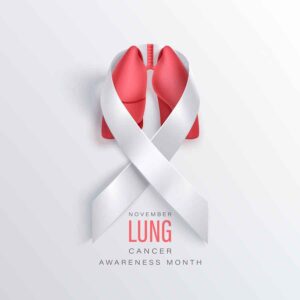We finally have a few days of sunshine to brighten our lives and make us feel like we’re in Spain until the rain starts again. Spare a thought for those who work outside as hot weather can pose its own set of health and safety risks. Equally, many will be heading abroad to hotter climates so an awareness of the hazards and how to deal with them will help you stay safe in the sun.
Sun Exposure
Workers who spend long periods of time outside are most at risk of sun exposure, including construction workers and gardeners.
The main short-term effect from extended sun exposure is sunburn, which can range from a mild reddening of the skin to more serious burns that blister and peel. It can also contribute to fatigue and dehydration. In the long-term, workers may experience leathery and wrinkled skin and an increased risk of skin cancer, which can be deadly.
How to Manage It
Workers should keep covered up as much as possible, including wearing a hat with a flap or brim to protect the ears and back of the neck.
All areas of exposed skin should be covered with a high SPF sunscreen and water should be made available to combat dehydration.
Whenever possible, allow for regular breaks in a shady area.
Those with fair skin should check for unusual moles or spots on a regular basis and see a doctor if they find anything that is changing in shape, size, and colour, or is itchy or bleeding.
Fatigue
Ever wondered why you sometimes feel so tired even if it’s just sitting out on a sun lounger? The sun tends to drain your energy as your body is working overtime to keep you cool. The hot sun causes dehydration to set in more quickly and UV rays trigger chemical changes in the body.
Fatigue can seriously affect a person’s ability to work safely as it can reduce mental and physical functioning, affect judgment and concentration, slow reaction time, and lower motivation. For workers who work near traffic or operate heavy machinery, this could mean the difference between ending the shift safely and being rushed to the A&E.
Symptoms indicating that a worker may be fatigued include:
- Weariness
- Irritability
- Reduced alertness
- Lack of motivation
- Headaches
- Loss of appetite.
How to Manage It
Avoid having workers in direct sun for lengthy periods and offer a shady area where they can take regular breaks.
Provide plenty of water and perhaps a salty snack to help replenish the salt the body loses while sweating.
If possible, hats can also help keep workers cool and protect from the sun.
Dehydration
Whether it’s through breathing, sweating, or urinating, our bodies are constantly losing water. And since water is what keeps our bodies functioning optimally by regulating our core body temperature, carrying nutrients to our organs, and flushing out internal toxins, it’s critical that we replenish this lost fluid.
Extreme heat and hard physical labour can increase the rate at which our bodies lose water, depleting our hydration levels and posing a health and safety risk.
Symptoms of dehydration include:
- Thirst
- Fatigue
- Muscle cramps
- Nausea, dizziness, or confusion
- Excessive sweating
- Hot, dry skin
How to Manage It
Make sure water is readily available and that workers drink it regularly.
Alcoholic, caffeinated, and sugary drinks can actually worsen dehydration, so it’s best to stick with water.
Urine colour is an important indicator of hydration levels. Clear or pale-yellow urine indicates adequate hydration, while darker yellow is a warning of dehydration.
Heat-Related Illnesses
“Heat stress” covers all heat-related illnesses, the most common being heat rashes and heat cramps, both of which generally occur due to excessive sweating in hot, humid conditions. Heat rash (or prickly heat) is characterised by small red bumps on the skin, while heat cramps are painful, involuntary muscle contractions that may be a symptom of heat exhaustion.
Heat exhaustion occurs when the body loses too much water and salt from sweating. It often affects workers who are carrying out strenuous work in high temperatures with high humidity. Left untreated, it may lead to heat stroke.
Heat stroke is the most serious of all heat-related illnesses and should always be treated as a medical emergency. It happens when the body is no longer able to control its core temperature or cool itself down.
How to Manage It
Workers and employers both play a role in helping prevent heat-related illnesses from taking hold.
Employers can:
- Adjust schedules to avoid outdoor work during the hottest period of the day (10am to 2pm)
- Reduce the physical demands of workers when temperatures and humidity levels are high
- Use relief workers or assign additional workers for physically demanding tasks
- Provide PPE appropriate to the weather conditions, if possible
- Mandate frequent rest periods in a shaded shelter
- Provide cool water or other non-alcoholic and non-caffeinated beverages to workers
- Train employees to recognize the signs of heat-related illnesses and take action
Workers can:
- Wear clothing that is light coloured, loose fitting, and breathable (like cotton)
- Gradually build up to heavy or demanding work
- Take frequent breaks in cool or shady areas
- Monitor themselves and their co-workers for signs of heat stress
Conclusion
The sun and warm weather are a welcome change from the cold and rain that we’re normally used to. A prolonged period of hot weather will pose a challenge to outdoor workers but by identifying and understanding the hazards and taking steps to manage the risk, you can ensure your workers remain safe, healthy, and productive.






